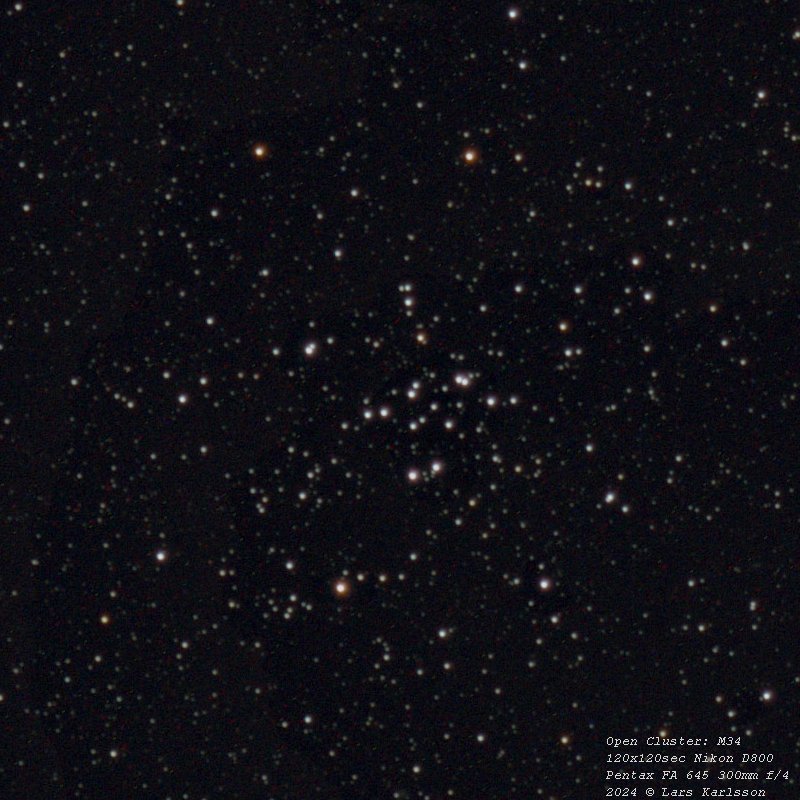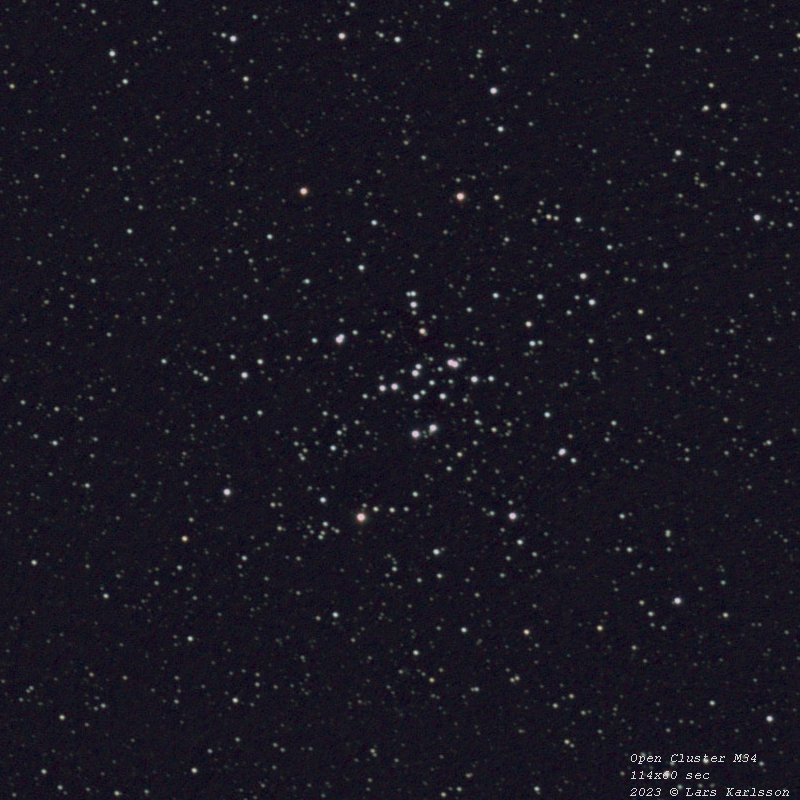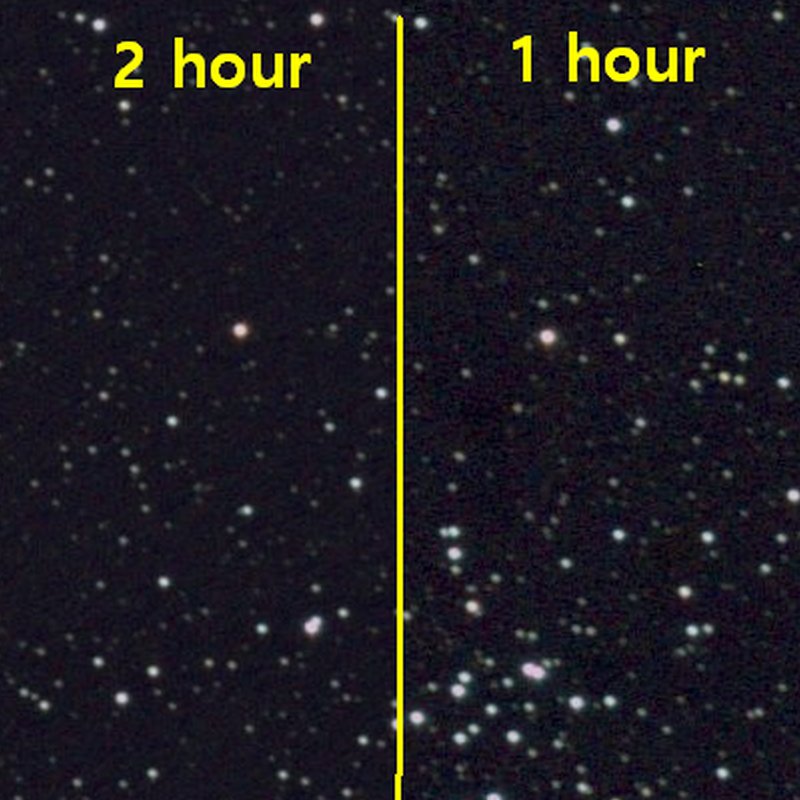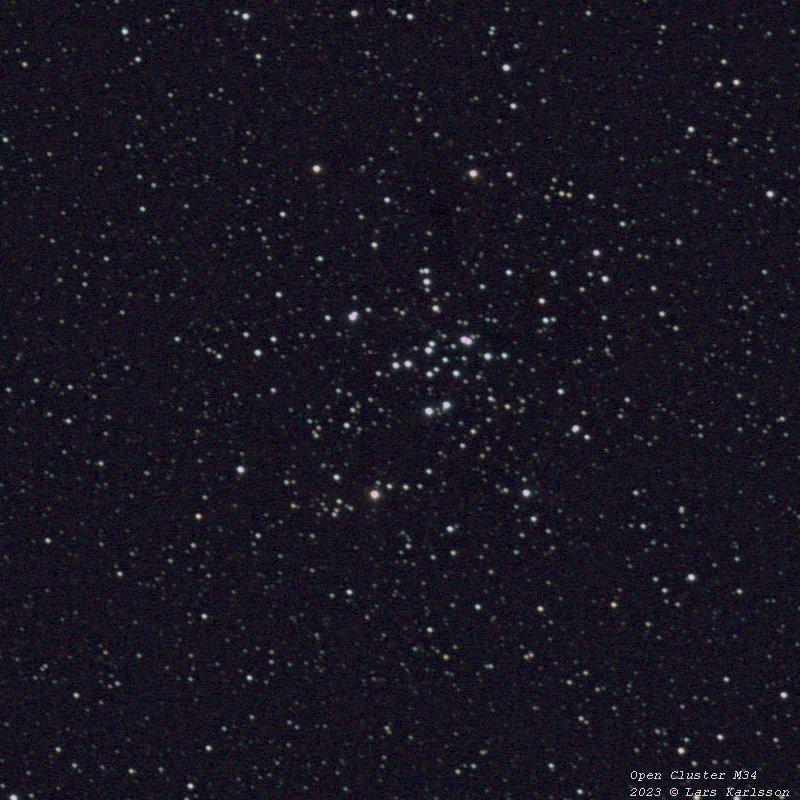| Object : | M 34 |
| Coordinates/Direction : | RA: 02h42m, DEC: +42o46' |
| Object size : | 35' |
| Object magnitude : | 5.5 |
| More to know : |
Wikipedia:
https://en.wikipedia.org/ wiki/ Messier 34 |
| Exp. time : | 120x60 seconds, iso400, dithering mode |
| Image process tool : | Siril, Gimp, Irfanview |
| Processing : | flat, photometric color calibration |
| Weather : | Clear sky, temperature +7o C |
| Comment : |
The open cluster M34 photographed with the new equipment.
The 36 Mpixel Nikon D800 and the Pentax 645 FA 300 mm f/4 ED.
Higher resolution, not only because of the new camera's more pixels, better auto guiding and better auto focus.
Compare with the image below which is taken with the Canon 6D camera and the older version of this lens.
Stars that are separated by 10" are easily seen as double stars, at the Canon image not.
I haven't installed the tilt corrector yet, you can see that at the left and right edges, non focused stars and elongated. |
| Exp. time : | 114x60 seconds, iso1600, dithering mode |
| Image process tool : | Siril, Gimp, Irfanview |
| Processing : | crop, cal bias, flat, photometric color calibration |
| Weather : | Clear sky |
| Comment : |
Added more images from an earlier photo session, increased the exposure from 1 hour to two hours. |
| Date : | 2023-09-24 + 2923-10-05 |
| Exp. time : | 114x60 seconds, iso1600 |
| Comment : |
Added more images from an earlier photo session, increased the exposure from 1 hour to two hours.
The left has less noise, but only twice the exposure time doesn't help much.
If possible better to aim for 4 hours exposure with this system f/4 and a DSLR camera.
But if will always be that you want lower noise and need even longer exposure.
Darker place, filters, lower noise camera will of course help a lot. |
| Exp. time : | 60x60 seconds, iso1600, dithering mode |
| Image process tool : | Siril, Gimp, Irfanview |
| Processing : | crop, cal bias, flat, photometric color calibration |
| Weather : | Clear sky |
| Site : | Sweden, Stockholm, Hagsätra, Bortle class 9 |
| Comment : |
Open star cluster are easy to take photos of even from high light polluted areas.
This is a classic object, discovered already 1654 by Giovanni Batista Hodierna.
The angle size is 0.5 degree, about as the Moon.
The true diameter is 7 ly and his has about 400 members (stars).
It's not very far away, 1500 ly.
Open the full resolution image and discover a lot of other objects lurking there in the dark.
Here is a plate solved version by astrometry.net:
M34 plate solved.
Opens in a new window. |
 (click on the image to get a full resolution photo in a new window)
(click on the image to get a full resolution photo in a new window) (click on the image to get a full resolution photo in a new window)
(click on the image to get a full resolution photo in a new window)
 (click on the image to get a full resolution photo in a new window)
(click on the image to get a full resolution photo in a new window)